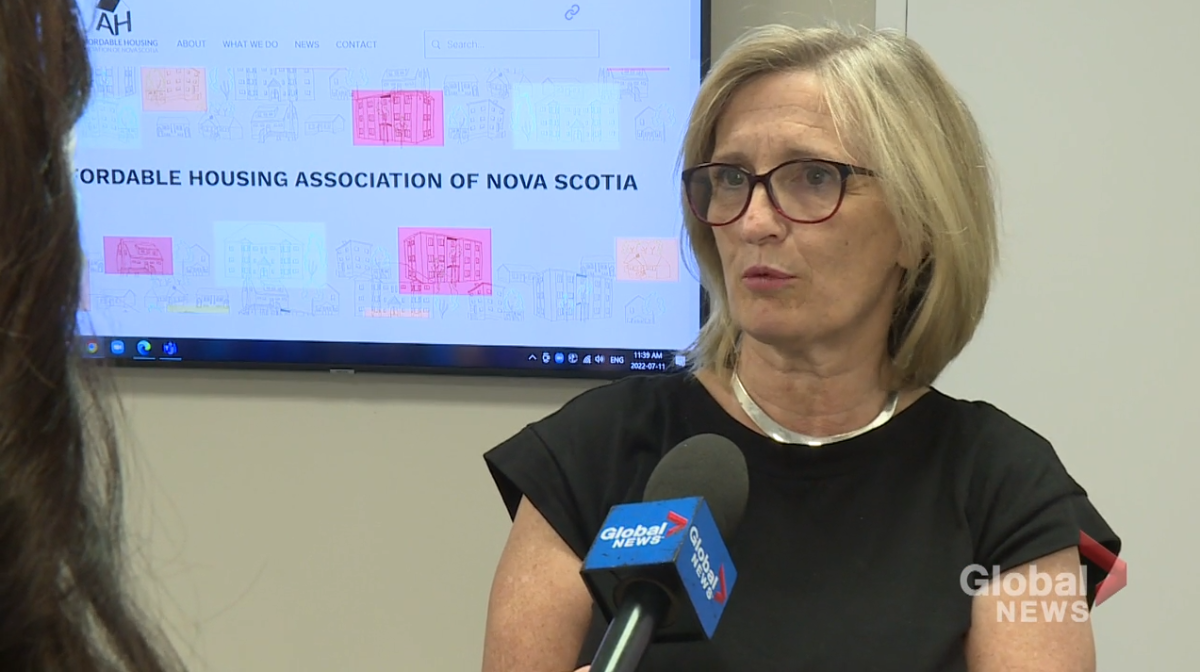An interactive map that identifies vacant buildings and spaces across the province is aimed at getting more Nova Scotians thinking about the housing crisis.

The map was made by freelance journalist Lorax Horne in partnership with Halifax Mutual Aid. It’s called This Should be Housing and it’s open-source, which means anyone can add spots that could or should be housing. The map also details whether the property is municipally, provincially or federally owned, or private.
So far there are more than 900 spots on the map.
“There needs to be more creative ideas about what to do with the space that we do have in the city,” said Horne.
They said they felt compelled to create the map following shelter evictions in downtown Halifax last summer.
“There were people giving out stickers that said This Should be Housing … and I was like, ‘Ah, this is a great idea, I can think of a lot of places where I would put this one sticker,’ but I only had one sticker. But then I was like, ‘Well what if I make a map where I could register where I would put it physically, but make it more crowd-sourced,'” said Horne.
They said while it’s a form of record-keeping, it also is a tool to hold all three levels of government accountable.
“Everybody is sort of passing the ball between themselves, so the map was kind of meant to put all of them a little bit on the spot and be like, well, look at all of these places that you’re not doing anything with,” Horne said.
It’s an initiative the Affordable Housing Association of Nova Scotia (AHANS) applauds.
“We think this is a terrific, terrific concept,” said Claudia Jahn, the director of community housing development with AHANS.
According to a new affordable housing supply report from the Canadian Mortgage and Housing Corporation, Nova Scotia will need to build 50,000 new units by 2030 to keep up with demand.
“So this goal — or this target — can only be achieved if we look at public assets,” she said.
She said instead of governments selling valuable assets to the private sector, they should be transferred to the non-profit sector, as it’s the only one able to provide truly affordable housing, she said.
“And that would allow the sector to function in parallel to the private sector — the third sector — that could create and really support the most vulnerable and the middle class and the affordability issue,” Jahn said.
“It’s innate for the private sector, their mandate is to make profits…. They cannot ensure affordability.”
Recently, AHANS has acquired more than 100 units of its own.
“The goal of our organization was, particularly during COVID, to acquire at least some buildings and protect them, the tenants, from renoviction,” Jahn said.
“That meant none of the tenants were displaced, nobody received an eviction and nobody received a rent increase.”
Other non-profits have also taken on the responsibility of creating more affordable housing.
Last year, Adsum for Women and Children signed off on an agreement with the Halifax Regional Municipality for Sunflower Court: a new 25-unit housing development for women, families and gender-expansive individuals experiencing housing insecurity.
Nova Scotia has more than 11,560 public housing units across the province — a number that has largely remained the same over the past 40 years. A recent report by auditor general Kim Adair showed that there were 5,950 applicants on the wait-list for public housing as of Dec. 31, 2021 — a figure more than half the total number of units in the province. There is an average wait time for public housing of about two years, with some applicants waiting much longer depending on the location and size of the unit required, she added.
“Our findings are very significant given the current situation, where the demand for public housing far exceeds supply,” Adair told reporters last month. “Because demand is beyond supply, what’s important is that the existing portfolio (housing supply) be used as efficiently as possible.”
While Jahn agrees more housing is needed, she believes much can be done with what’s already available.
“I think we should really carefully with government and everybody involved, explore these kinds of potential sites to use them more effectively,” she said. “Because what we are doing currently, really, millions are spent on emergency solutions — highly expensive, only short-term solutions.”
This Should be Housing has been live for roughly a year, and Horne said they’re encouraged that so many people are using the tool.
“I think that was the goal: to get people interested in the problem and to get them to think about the space around them and to question how it’s being used currently,” they said.






Comments